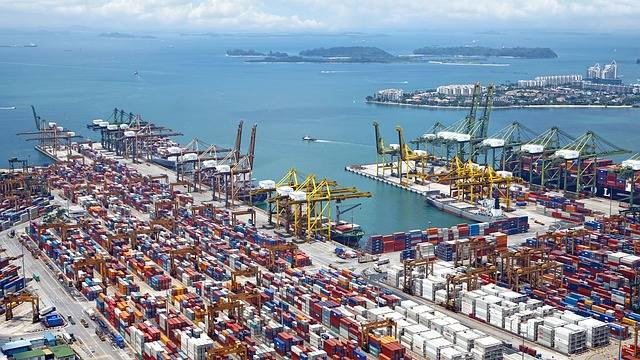International shipping is an essential part of eCommerce businesses that operate globally. As long as you offer products to customers in other territories, it would help if you got involved in international shipping. So, no matter how small your online store is, there’s every reason to learn how international shipping works.

Let’s find out.
How International Shipping Works
To deliver a shipment internationally, the item must cross the seller’s border to the destination. Customs authorities monitor such shipments at the border, plus you’re not expected to take your shipment yourself through the border into another country. Hence, to do international shipping and deliver packages promptly without issues, you must consider two essential activities:
- Selecting a courier (or international shipping company)
- Creating customs documents
There are various international shipping companies, such as DHL and FedEx. The right choice would largely depend on the package’s destination; the shipping costs you and your customers are willing to face, and your customer’s preferred shipping method. For example, most people in a geographical area may prefer pick-up or cash on delivery. It’s wise to understand consumer preferences before shipping to them.
Furthermore, check if your preferred logistics service allows reverse shipping. That’s because there will likely be return issues, so you want the process to be fluid rather than having to contract another shipping company when there’s a dissatisfied customer.
Then you also want to consider the total cost of shipping internationally. If the cost outweighs the potential benefits or there’s a particular country with higher customs fees, you may want to steer clear.
This brings us to…
Customs Clearance
Customs clearance is arguably the most significant headache eCommerce businesses have to face. It’s riddled with import/export laws and documentation. With so many forms to fill out for each shipment, it’s here that most problems arise during international shipping, causing delays or additional unforeseen fees.
As an online store owner shipping packages to customers overseas, you would have to pay duties and taxes on each order; or have the customer pay them. Sometimes, a customer may face additional costs no one told them about, simply because you didn’t know. That’s because many rules govern customs clearance; some change frequently, and some are specific to certain items.
Indeed, it can be hard to keep track of it all while trying to stay on top of sales, marketing, customer service, inventory, packaging, etc.
But you can’t avoid filling out customs forms and navigating duties and taxes across different borders. Most times, it’s just better to opt for customs brokerage for smooth and efficient international trade. Leave the headache of customs clearance to a customs broker so you can focus on the core activities of your eCommerce business.
4 Tips For International Shipping In Ecommerce
How’s how to minimize problems when shipping internationally
1. Know What Documentation Is Required
Find out all the documentation needed for each shipment. Remember that the documents vary with the item and destination. Consider leaving this to a customs broker if it’s too much headache.
2. Let Customers Be In The Know
It doesn’t help to have hidden charges. If you do that, customers may leave negative reviews for everyone to see. Moreover, they may reject your package due to unexpected customs duties, and you’ll be responsible for the cost of return. If not, customs will have to destroy the item. It’s always a loss.
If there’s any fee a customer will encounter, let them know on time before shipping. Always disclose the expected delivery time, conditions for returns, and the delivery service.
3. Sell Only Authorized Goods
Some goods are banned or considered “dangerous” in some countries. Shipping such items may lead to fines or heavy surcharges. On the other hand, certain products may need special licenses or certifications to cross the border. You have to be in the know beforehand, so researching each country and item is vital.
4. Package The Item Properly For The Long Trip
You don’t want any customer receiving their order in ruins. This requires that you package items according to their level of fragility. Include protective material around the product, reinforce box corners with tape, and never use overly small packaging, as there’s a risk of loss or damage.
Understanding Duties And Taxes
To understand international duties and taxes, it is crucial to becoming familiar with product classification systems such as TARIC, HS, and HTS codes. These codes determine the duties and taxes that exporters or importers must pay to ship or receive goods.
Properly classifying items is necessary to avoid customs issues, and you must be aware of Incoterms, which outline responsibilities for both exporters and importers.
Documents Required For International Shipping
Common documents required for international shipping include:
- Invoice
- Certificate of origin
- CN22 and CN23 forms
- Cp71 form
- Packing list
- H7 document
Final Thoughts
Entering the global market is an excellent way to expand your cash inflow and reach. You have to understand what it entails to minimize costly mistakes and hassles. The more satisfied your customers are with your service, the better for your business, so it’s worth giving your all.

